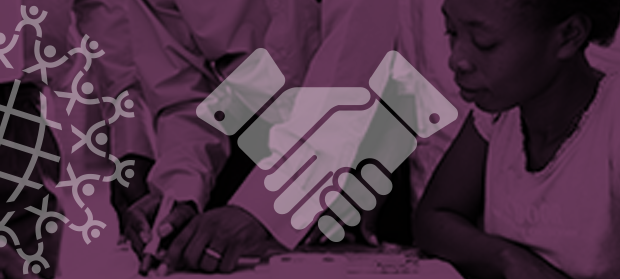Where We Work
See our interactive map


We need the unique expertise of both to solve community health problems.
Last year in Ghana, Anthony Opoku-Acheampon felt dizzy and had a headache. His son and wife drove him to C&J Hospital for help. But instead of examining him, a nurse turned the 70-year-old man away, saying there wasn’t an available bed.
The family visited six more hospitals and heard the same refrain—there were no beds. Opoku-Acheampon died in his son’s car outside LEKMA Hospital, causing an outcry around the country over “no bed syndrome.”
Opoku-Acheampon’s death spurred a government investigation into space allotment at public hospitals that found that hospitals didn’t lack space—the bed management systems were being mismanaged, resulting in out-of-date information for health workers.
The Ghanaian Minister of Health decided the country needed external expertise to help patients navigate the health system and access the high-quality services they needed. He was interested in a private-public partnership.
This was one story we heard this month at the Africa Health Business Symposium in Addis Ababa, Ethiopia.
IntraHealth International and the Medtronic Foundation hosted a session for government representatives and private-sector stakeholders from across the continent to discuss how we can strengthen community health by focusing on the frontline health workforce and program collaboration.
![• These four young women are among 22,000 health worker students in Kenya who have received low-interest loans through the Afya Elimu Fund [link], a private-public partnership, to complete their education.](/sites/default/files/styles/max_width_800/public/rs4641_intrahealth_aug16_0433.jpg?itok=eV-gCmTJ)
These four young women are among 22,000 health worker students in Kenya who have received low-interest loans through the Afya Elimu Fund, a private-public partnership, to complete their education. Photo by Georgina Goodwin for IntraHealth International.
Government representatives described barriers to large-scale health worker programs—including an overwhelming number of models, the high risk of selecting an inappropriate model, challenges in making the case for investing in health workers, and limited resources to cover start-up costs.
Private-sector partners noted different challenges. Their organizational priorities often change, so program sustainability is far from guaranteed. And institutional knowledge of what’s been tried before is sometimes missing, so pilots can end up being repeated.
Traditionally, African governments are used to large-scale partnerships with donor countries or international multilaterals where the program is implemented directly by the bilateral partner, covering a large swath of the country and providing commodities and wide-ranging health service delivery. Changing the way they do business to accommodate how private-sector organizations operate can be risky.
Finding documented examples of good partnerships in similar or neighboring countries can help.
The following public-private partnerships have demonstrated success in aligning with and complementing government programs:

“As I grew up, all I wanted was to be a nurse,” says Mercy Wangui Kariuki. She is one of 22,000 health worker students in Kenya who have received Afya Elimu fund loans to complete their education. Photo by Georgina Goodwin for IntraHealth International.
The successful public-private partnerships we’ve seen involve using private-sector expertise—not just funding—to solve community health problems.
Governments should recognize that partnerships with the private sector won’t necessarily look like programs they’re used to. Instead, they should tap into the know-how the private sector has built to address community health and health workforce issues and ensure private-sector strengths like staff management, technological innovation, and creative funding mechanisms are applied strategically.
Private-sector partners should recognize the feasibility of a government taking up a program and apply seed funding for specific, focused issues where the ease of transition is higher.
By utilizing the strengths of both partners, we can build a foundation of tangible results to make faster progress toward a resilient and empowered health workforce that can ensure all communities have access to high-quality health services.




